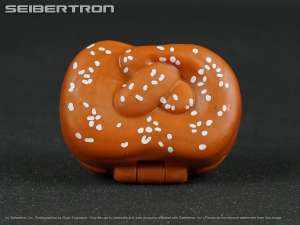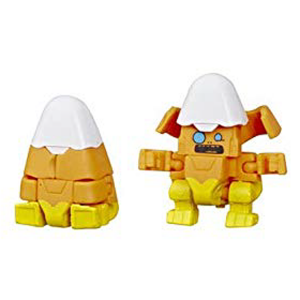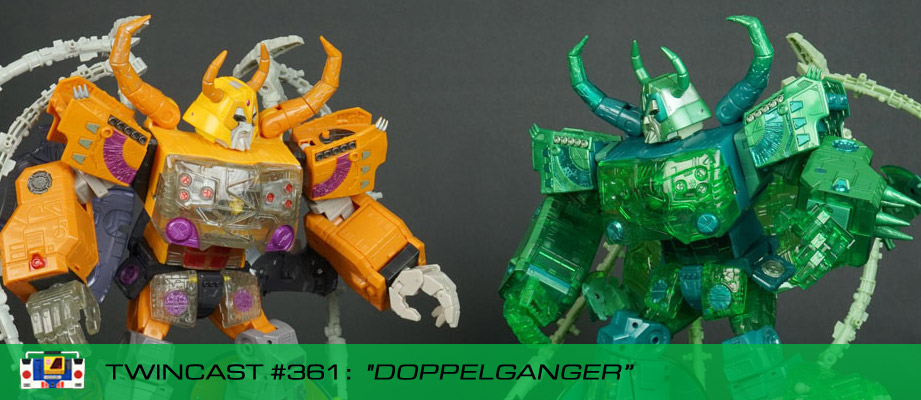Transformers and More @ The Seibertron Store


ZeroWolf wrote:I am now intrigued about those comics now burn. I'm liking how much less kiddy it looks then the original cartoon.
duragrip wrote:Isn't Filmation the best?

Wigglez wrote:Just remember. The sword is an extension of your arm. Use it as if you're going to karate chop someone with your really long sharp ass hand.
duragrip wrote:Isn't Filmation the best?
Shadowman wrote:duragrip wrote:Isn't Filmation the best?
Their animation was godawful. They were more concerned with putting out a product than putting out a quality product. That's probably why they folded in '89.
fenrir72 wrote:Btw, I would not call their animation best, but I don't consider it godawful. They had their particular style like Studio Ghibli, Disney etc has their own. Now, everything looks like Ben10 or Avatar (the Last Air Bender). WB's Legion of Superheroes had a distinct style, too bad it lasted 1 season.

Wigglez wrote:Just remember. The sword is an extension of your arm. Use it as if you're going to karate chop someone with your really long sharp ass hand.
Shadowman wrote:fenrir72 wrote:Btw, I would not call their animation best, but I don't consider it godawful. They had their particular style like Studio Ghibli, Disney etc has their own. Now, everything looks like Ben10 or Avatar (the Last Air Bender). WB's Legion of Superheroes had a distinct style, too bad it lasted 1 season.
The major difference is Studio Ghibli and Disney's "particular styles" were actually having good animation. Filmation's style was use of stock footage and limited movement, simply for the sake of being cheap to produce.
fenrir72 wrote:Shadowman wrote:fenrir72 wrote:Btw, I would not call their animation best, but I don't consider it godawful. They had their particular style like Studio Ghibli, Disney etc has their own. Now, everything looks like Ben10 or Avatar (the Last Air Bender). WB's Legion of Superheroes had a distinct style, too bad it lasted 1 season.
The major difference is Studio Ghibli and Disney's "particular styles" were actually having good animation. Filmation's style was use of stock footage and limited movement, simply for the sake of being cheap to produce.
They specialized in weekly serials and made in the USA. Much more expensive to produce because it was made in USA. To blanket generalize it as ugly, well I can also use as an example Wolf Kubiak style in the now defunct TMNT 1980 series and their atrocious Speed Racer revamp or the Scooby Doo shows in the 70s or even the gosh cheap Pink Panther series or Rocky and Bulwinkle. Your call if you consider it much better than Filmation. Maybe you don't dig the style, granted, but again, that maybe just your opinion.
Now that you mentioned it, Filmation also did the classic Star trek animation. Great stories by the great scifi writers of today. And their Tarzan Lord of the Apes, that was well made too. For every great series, they had The Original Ghost busters.....arrgh! Bravestar was .......well okay but not to the level of MOTU. MOTU had great writers too in their stable but of course, their, Filmation era just ended too as they can no longer produce products that the market want.
I am not too hang up on Filmation like duragrip is as I also miss other animation styles of the 80s like Rankin Bass' Flight of Dragons, Last Unicorn and Thundercats. And of course, ground breaking even for its time..........Tatsunoko's Gatchaman. Wow, for a kid themed show, it show did carry lots of mature themes.
Filmation had a reputation for exploiting the technique of limited animation to produce a number of animated series with a distinct look. It made heavy use of rotoscoping in later years (beginning with its Tarzan and Flash Gordon series). It also re-used the same animated sequences over and over, many times, to the point where the Filmation style was instantly recognizable.
Filmation's animation often looked poor-quality, due to the limiting of the number of frames per second used to fewer than the regular 24 frame/second seen on film or 25/30 frame/s seen on video. Frames would be repeated to compensate for the deficiency, resulting in a jerky and cheap look.
This frequent use of stock footage saved production money, but often resulted in sacrifice of continuity. This was countered by cutting from one stock shot to another after only a second or two, long enough to set the scene but before the eye could notice all of the unexplained errors. This became part of Filmation style during a period when most TV and motion picture production tended to run minimum shots of 4–5 seconds.
In contrast to the rapid jump cuts during action sequences, another Filmation trademark was the recurring use of long establishing-shots in which the camera would pan slowly across a very wide background painting, thus filling up screen time with sequences requiring little or no animation.

Wigglez wrote:Just remember. The sword is an extension of your arm. Use it as if you're going to karate chop someone with your really long sharp ass hand.
fenrir72 wrote:As I am also guilty but I did manage to get duragrip to admit that red heads are hotter than blonds. Adora may be hot but the Sorceress and Tee-La tops..........hands down
duragrip wrote:I like how Filmation drew the He-man and She-ra characters, very smooth, not choppy like today. Filmation artists really knew how to draw the human anatomy. The Filmation backgrounds were stunning. Watch "The Taking of Grayskull". The psychedelic world they created was amazing. They had such imagination. Also, the special effects like the transformation sequences were really fun to watch (eg. "Into the Abyss"). The art and vision of the characters more than made up for any of the deficiencies. Filmation has been the only successful incarnation thus far (ie. financially). Why not bring it back and reuse it? It was pure marketing genius!
ZeroWolf wrote:Why not bring it back you say? Hmmm. How about because it would fall flat on its face. Kids won't want to watch it, especially compared to shows like Adventure Time, Ben 10, Transformers Prime, Star Wars Rebels and the legend of Korra. The animation has not aged well at all and the toys would have to be of todays engineering standards to compete. Plus kids can't connect with he-man, I mean how many will even know who he is. The franchises only hope is the movie in production, but if that tanks...then the franchise will be left with the only market it started with...kids from the 80s who are now collectors.
Shadowman wrote:fenrir72 wrote:Shadowman wrote:fenrir72 wrote:Btw, I would not call their animation best, but I don't consider it godawful. They had their particular style like Studio Ghibli, Disney etc has their own. Now, everything looks like Ben10 or Avatar (the Last Air Bender). WB's Legion of Superheroes had a distinct style, too bad it lasted 1 season.
The major difference is Studio Ghibli and Disney's "particular styles" were actually having good animation. Filmation's style was use of stock footage and limited movement, simply for the sake of being cheap to produce.
They specialized in weekly serials and made in the USA. Much more expensive to produce because it was made in USA. To blanket generalize it as ugly, well I can also use as an example Wolf Kubiak style in the now defunct TMNT 1980 series and their atrocious Speed Racer revamp or the Scooby Doo shows in the 70s or even the gosh cheap Pink Panther series or Rocky and Bulwinkle. Your call if you consider it much better than Filmation. Maybe you don't dig the style, granted, but again, that maybe just your opinion.
Now that you mentioned it, Filmation also did the classic Star trek animation. Great stories by the great scifi writers of today. And their Tarzan Lord of the Apes, that was well made too. For every great series, they had The Original Ghost busters.....arrgh! Bravestar was .......well okay but not to the level of MOTU. MOTU had great writers too in their stable but of course, their, Filmation era just ended too as they can no longer produce products that the market want.
I am not too hang up on Filmation like duragrip is as I also miss other animation styles of the 80s like Rankin Bass' Flight of Dragons, Last Unicorn and Thundercats. And of course, ground breaking even for its time..........Tatsunoko's Gatchaman. Wow, for a kid themed show, it show did carry lots of mature themes.
The animation was still terrible. Compare anything by Chuck Jones or Bob Clampett to anything Filmation did, there is no comparison.
And from Wikipedia:Filmation had a reputation for exploiting the technique of limited animation to produce a number of animated series with a distinct look. It made heavy use of rotoscoping in later years (beginning with its Tarzan and Flash Gordon series). It also re-used the same animated sequences over and over, many times, to the point where the Filmation style was instantly recognizable.
Filmation's animation often looked poor-quality, due to the limiting of the number of frames per second used to fewer than the regular 24 frame/second seen on film or 25/30 frame/s seen on video. Frames would be repeated to compensate for the deficiency, resulting in a jerky and cheap look.
This frequent use of stock footage saved production money, but often resulted in sacrifice of continuity. This was countered by cutting from one stock shot to another after only a second or two, long enough to set the scene but before the eye could notice all of the unexplained errors. This became part of Filmation style during a period when most TV and motion picture production tended to run minimum shots of 4–5 seconds.
In contrast to the rapid jump cuts during action sequences, another Filmation trademark was the recurring use of long establishing-shots in which the camera would pan slowly across a very wide background painting, thus filling up screen time with sequences requiring little or no animation.
ZeroWolf wrote:Your theory is also untested, your only fact is MOTUC, which was launched for collectors, aka not kids, that's like saying the existence of the transformers masterpiece line is perfect evidence that they should show nothing but G1 all the time on major networks. Okay the last part is taking things a bit to far but you get what I'm saying.
Plus I know what kids are like these days, a relic from the past isn't going to win them over. Kids want more style and substance. Kids do not want a series made on the cheap.
As for the 2000s series, I'm sure there was many reasons for its failure, as someone else pointed out, too many he-mans and skeletors will do that. Maybe kids just didn't want a fantasy series like that back then. In closing filmation is dead, Mattel would be wasting money replicating hat style. Any new series will be.CGI and not made America. Get used to it.
Burn wrote:Kids these days don't want to see a grown man running around in a loin cloth.
They want something they can relate to, whether it's coming across a wrist band that allows you to tap into the DNA of aliens or bond with a flying robot to power up. They need to be able to relate.
And you just can't relate to a Prince who transforms into a guy that carries a sword and wears a loincloth and beats up a bloke who has no face.
ZeroWolf wrote:The point is why bother? If Mattel want to put a new show together it will be for the benefit of their target market: kids. Such a project like you suggest Fenir would be more aimed at the fans. Really though let the shows from the eighties lie where they are. They did their job with distinction, they have birth to franchises (though in G.I Joe's case it was a rebirth). IRS been thirty years, let us not cling to The coatails of the past, we should aspire to create new entries for our beloved franchises, so that the kids of today may fall in love with them and can say they have their own show.
Franchises should constantly seek to evolve and add to itself instead of repeating or rehashing.
*gets off soapbox*
Plus Mattel at the moment would probably want to just keep making Disney toys since Frozen sold a huge tonne of toys.
 . They churn out the same releases, up the resolution, add new panty shots, sell out at overpriced sets and still end up being in the red.
. They churn out the same releases, up the resolution, add new panty shots, sell out at overpriced sets and still end up being in the red.fenrir72 wrote:As I said, the Japanese market is waaaaaaaaay out of this world. In Gundam Seed Destiny for instance, it was released this time in BD (nope, not like the DVD released by Bandai America)with new "corrected scenes". You know what were those corrected scenes? A more detailed shots of Lunamaria's purple panties. They churn out the same releases, up the resolution, add new panty shots, sell out at overpriced sets and still end up being in the red.
It boggles the mind as the fans there really put up with this types of products.

Wigglez wrote:Just remember. The sword is an extension of your arm. Use it as if you're going to karate chop someone with your really long sharp ass hand.
Shadowman wrote:fenrir72 wrote:As I said, the Japanese market is waaaaaaaaay out of this world. In Gundam Seed Destiny for instance, it was released this time in BD (nope, not like the DVD released by Bandai America)with new "corrected scenes". You know what were those corrected scenes? A more detailed shots of Lunamaria's purple panties. They churn out the same releases, up the resolution, add new panty shots, sell out at overpriced sets and still end up being in the red.
It boggles the mind as the fans there really put up with this types of products.
To be fair, Seed Destiny was an overall poopy series. The fact that they think it needs more fanservice and not, oh, I don't know, getting rid of the overabundance of flashback sequences, is not going to help move copies.
fenrir72 wrote:Shadowman wrote:The major difference is Studio Ghibli and Disney's "particular styles" were actually having good animation. Filmation's style was use of stock footage and limited movement, simply for the sake of being cheap to produce.
And from Wikipedia:Filmation had a reputation for exploiting the technique of limited animation to produce a number of animated series with a distinct look. It made heavy use of rotoscoping in later years (beginning with its Tarzan and Flash Gordon series). It also re-used the same animated sequences over and over, many times, to the point where the Filmation style was instantly recognizable.
Filmation's animation often looked poor-quality, due to the limiting of the number of frames per second used to fewer than the regular 24 frame/second seen on film or 25/30 frame/s seen on video. Frames would be repeated to compensate for the deficiency, resulting in a jerky and cheap look.
This frequent use of stock footage saved production money, but often resulted in sacrifice of continuity. This was countered by cutting from one stock shot to another after only a second or two, long enough to set the scene but before the eye could notice all of the unexplained errors. This became part of Filmation style during a period when most TV and motion picture production tended to run minimum shots of 4–5 seconds.
In contrast to the rapid jump cuts during action sequences, another Filmation trademark was the recurring use of long establishing-shots in which the camera would pan slowly across a very wide background painting, thus filling up screen time with sequences requiring little or no animation.
duragrip wrote:The 200X writers were given creative and artistic license, free reign, and they hated Mattel influencing the content and flow of the 'their' cartoon. So, the show failed due to lack of toy sales. She-ra was planned to be introduced in the next season, but that did not happen because the writers became divas, pre-madonnas, and debutantes. They thought that they owned the show, so they would not listen to Mattel when Mattel was asking them to position certain characters (eg. Snakemen) in certain episodes strategically in order to get kids to buy the toys. It was too late because the writers did not want to give up the freedom that they were initially given.
Burn wrote:duragrip wrote:The 200X writers were given creative and artistic license, free reign, and they hated Mattel influencing the content and flow of the 'their' cartoon. So, the show failed due to lack of toy sales. She-ra was planned to be introduced in the next season, but that did not happen because the writers became divas, pre-madonnas, and debutantes. They thought that they owned the show, so they would not listen to Mattel when Mattel was asking them to position certain characters (eg. Snakemen) in certain episodes strategically in order to get kids to buy the toys. It was too late because the writers did not want to give up the freedom that they were initially given.
You can back all that up with evidence yes?

Wigglez wrote:Just remember. The sword is an extension of your arm. Use it as if you're going to karate chop someone with your really long sharp ass hand.
Registered users: Bing [Bot], Glyph, Google [Bot], Google Adsense [Bot], Majestic-12 [Bot], Red Sentinel, TigrisEye, Zordon


